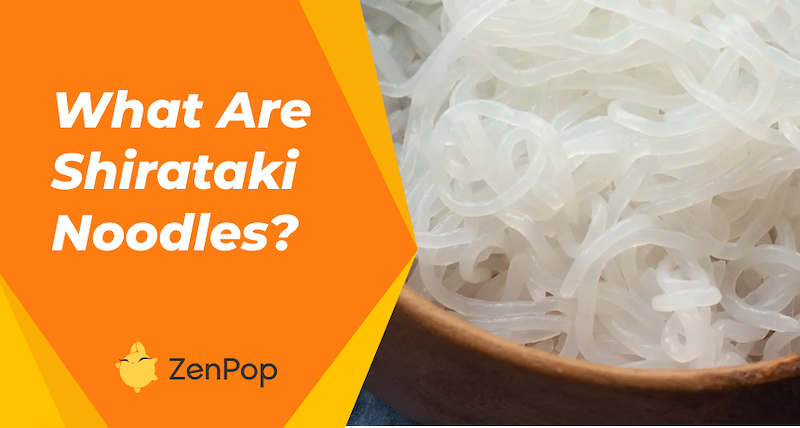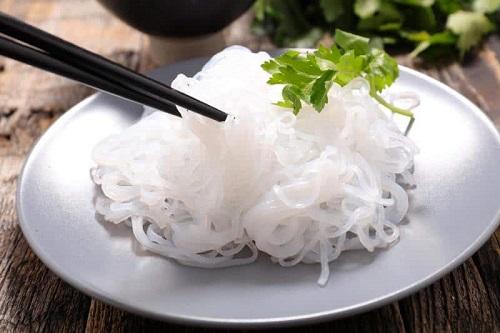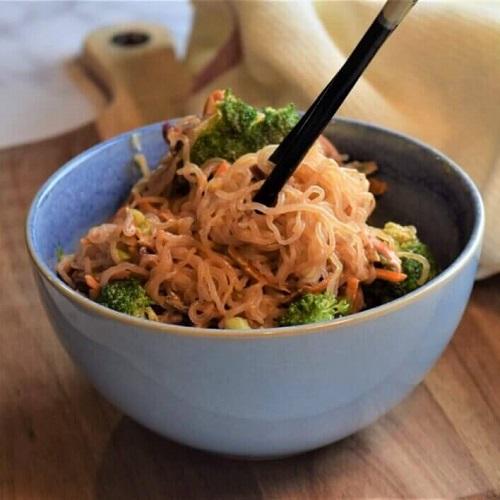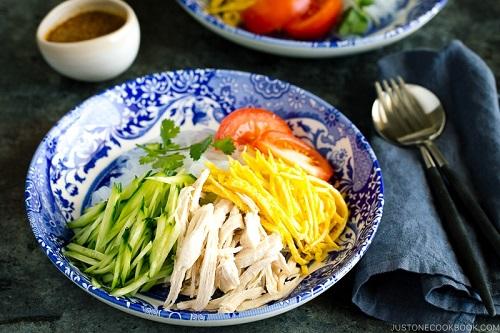
</title><meta name="robots" content="noindex"> What Are Shirataki Noodles?
When we think about Japanese cuisine, we probably think of a bowl of hot ramen, and it's not you being stereotypical, ramen is that popular. Noodles have been a staple and essential part of Japanese and eastern Asian cuisine at large for millennia. It's no wonder there are so many of them, not to mention how delicious they are. Like everything else that’s delicious, most servings of noodles do not exactly have low calories, except shirataki noodles.
In this article, we are going to cover everything you need to know about this “zero-calorie noodle”. Is it the secret to getting that hot summer bod? Keep reading to find out!
Origin Of Shirataki Noodles
Shirataki (白滝) noodles or Konjac noodles are white, sometimes translucent, tasteless gummy noodles, it translates to "white waterfall" in Japanese. It's made from the root ( an underground stem that is used for storage in plants) of an Asian plant called the konjac plant, the Konjac yam, elephant yam or devil's tongue. This plant is also used to make another popular Japanese dish called Konjac Jelly; read about Konja jelly.
The main ingredient comes from a fiber in the stem called glucomannan, which is used in making flour, this has been used not just for the production of shirataki noodles but in tofu, oats and even ancient traditional medicine. All this might sound interesting, but the cool part of it all that has grabbed the attention of most people is its near-zero-calorie value earning the name "miracle noodles". Shirataki noodles are made up of 97% water and only 3% gelatinous fiber, leaving almost no room for calories. It's also gluten-free and it basically means one is eating water, a real miracle indeed.
How Shirataki Noodles Are Made

It's a well-known secret that the best time for harvesting Konjac plants is when they reach the age of three. When the young plant comes of age the stems are removed from the ground, peeled, cut up and dried in the open air. The dry chips are then milled and treated to become konjac flour. The resulting flour is then boiled with water and lime water. This mixture is boiled until a gum-like paste is formed a cut into threads, this method of production was in the past restricted to the Kansai region, while in the Kanto region, the glucomannan glue is extracted by making holes in the stem and soaking it in a concentrated solution of lime water.
What Do Shirataki Noodles Taste Like?
Well, the truth is, they don’t really taste like anything. Because they are almost 100% water, they will take on the flavor of whatever ingredient is used in making them. That’s why you should make sure to bring out the inner master chef in you when making shirataki noodles.
Are you curious about the history of noodles in general? Check out our article about the cup noodle museum in Osaka where we cover all you need to know about ramen noodles.
Where To Find Shirataki Noodles
Shirataki noodles are available in local Asian markets in places with a sizable Asian community or in instant noodles packets found in stores. In both cases, the noodles are kept in water to keep them from going dry and losing their signature texture. If you are one who enjoys experimenting with new dishes, you can opt to buy the konjac flour and make it from scratch yourself, just make sure you know what you are doing because you can get into sticky situations, pun intended.
How To Eat Shirataki

According to instructions on most Shirataki noodles instant packets and wise Japanese obāsans (grandmothers), the water from the packet should be drained and the noodles rinsed or boiled. Shirataki noodles traditionally can be eaten in a cold noodle salad, or cooked with a broth like miso soup. A common recipe is stir-fried shirataki noodles, using sesame oil wIth vegetables and meat chunks, but the truth is there is no one way of eating it.
Health Benefits Of Shirataki Noodles

- Lowers blood sugar: both type I & type II diabetes are responsible for 1.5 million deaths yearly, so it's no surprise as to why most people are afraid of it. The Glucomannan starch helps in slowing down digestion which aids in balancing the blood sugar level.
- Say bye-bye to cholesterol: the mechanism of action isn't fully known, but consumption of glucomannan based products has been found to reduce cholesterol levels by Upton 10% in certain cases and even lowering triglyceride levels.
- A healthy gut is a happy gut: Fibers in general are essential for proper Digestion and bowel movements. Shirataki noodles containing glucomannan, a water-soluble starch, obviously makes digestion a whole lot easier, reducing the risks of feeling bloated or constipated.
- Promotes the growth of gut bacteria: Shirataki noodles don't just feed you, it also feeds and promotes the growth of good bacteria in the gut. This eventually helps in reducing inflammation in the gut.
- Skin healing: Glucomannan has been linked to a possible decrease in the number of skin cells destroyed by UV radiation and also helps prevent skin redness.
- Hyperthyroidism: According to a study of 48 patients with hyperthyroidism, glucomannan was found to reduce the levels of thyroid hormone in combination with the standard therapy.
- Helps in patients with Polycystic ovarian disease (PCOD): According to research done in 2014, glucomannan was shown to reduce both insulin and fructosamine levels in patients with the polycystic ovarian disease, having lower levels of both are helpful in people suffering from PCOD.
- Helps in preventing colon cancer: by stimulating intestinal muscles, cleaning up the digestive tract and enabling consistency in stool being passed and other actions like promoting proper mineral absorption. A diet of shirataki noodles is helpful in preventing colon cancer by keeping it healthy.
Types Of Shirataki Noodles
The most common variant of shirataki noodles is tofu shirataki noodles. This is made from a blend of tofu and Konjac flour, and it's also gluten-free but unlike the common shirataki noodles, tofu shirataki noodles have a faint yellow color and are opaque, there's also less gelatin and according to some taste better than the original.
Another mistaken variant is glass noodles. Shirataki noodles are often confused with glass Noodles because they both have a see-through appearance and are made from a wide range of flours but unlike shirataki noodles, they are sold dry.
Shirataki noodles are perfect for people with wheat and gluten allergies or people seeking weight loss. It has multiple health benefits and can be cooked stir-fried with salads, boiled or however you like. Every bite of it is a tasty miracle.
Right now, you’re probably hungry for some ramen. Don’t worry, we’ve got you covered. Check out our ZenPop ramen box and get it anywhere in the world.
This article was originally written by our freelance writer Umm-Kulthum Abdulkareem and edited by us.
